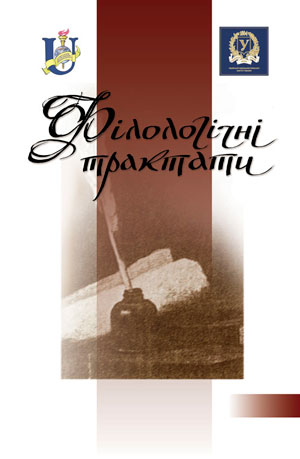SEMIOTICS OF UKRAINIAN AND ENGLISH INTELLECTUAL NOVELS IN “MAN IS A COMMODITY” CONTEXT
Keywords:
semiotic model, poetics, semiotics, genre, plot and thematic features, internal transformationAbstract
The article under consideration is devoted to the actual topic in modern society, which is investigated through the scope of Ukrainian and English intellectual novels “Misto” by V. Pidmohylnyi and “The Picture of Dorian Gray” by O. Wilde. This topic reveals the principle that life is a fair”, i.e. everything could be bought and sold, and a man is a commodity in this cruel world. The novelty of the research is that it is the first time an attempt to identify and explore the artistic-semiotic model of “life is a fair” in the works by O. Wilde and V. Pidmohylnyi in the perspective of modern comparative literature; the artistic-semiotic model of "life-fair" in a number of works of Ukrainian and English literature is systematically considered; the functioning of the model at the poetic and semiotic levels is comprehensively analyzed; the main structural elements of the literary model (constant and transient) are highlighted; a comparative-typological comparison of the creative work of writers was made, as well as the role and significance of a complex artistic-semiotic analysis of a literary work were specified. Further development of certain provisions of the research in future literary studies is likely on the basis of not only comparative but also theoretical vectors, which will be based on a more detailed study of the artistic and semiotic space of each of the studied artists. This will create an opportunity to identify complex artistic and semiotic paradigms of modeling the brightest representatives of domestic and world literature.Downloads
Published
2022-05-04
How to Cite
Khairulina, N. ., & Dmytrenko, . V. (2022). SEMIOTICS OF UKRAINIAN AND ENGLISH INTELLECTUAL NOVELS IN “MAN IS A COMMODITY” CONTEXT. Philological Treatises, 13(2), 16–22. Retrieved from https://tractatus.sumdu.edu.ua/index.php/journal/article/view/998
Issue
Section
Articles













